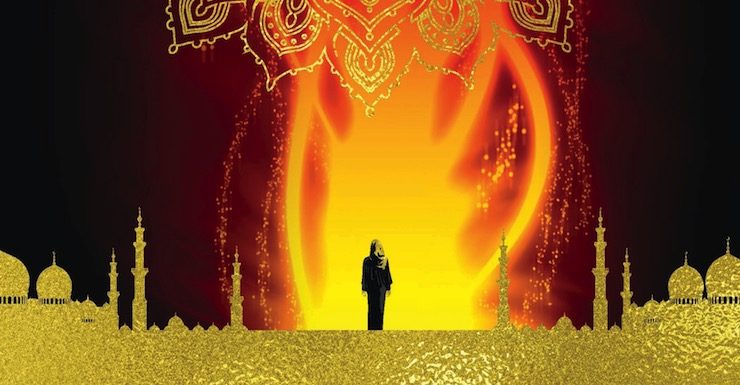When it comes to stories from the medieval Middle East, One Thousand and One Nights looms large. But its popularity in the Western world likely owes as much to the timing of its original translation as it does to its entertaining tales. Though the Nights has ancient roots in Persia and India, the lively world it recreates in Arabic is that of what is often called the Islamic Golden Age. Though there’s some scholarly disagreement on this term, the Islamic Golden age roughly corresponds with the rise and fall of the Abbasid Caliphate (762-1258 CE). This was a vast and sophisticated world, a cultural continuity that stretched from Spain to the Sumatra. Long-distance travel was commonplace for both trade and scholarship; and indeed, scholars such as Ibn Battuta and Ibn Jubayr left extraordinary accounts of their journeys in a rihla, a literary genre chronicling such quests for knowledge. Tales of heroes and marvels of creation populated both the written works and oral tales of the times, passing down through the centuries to storytellers even today.
Theirs is a world which has always fascinated me, and one which inspired my own fiction. Here I’ve selected five works, both historical and modern—and from a very, very long original list!—to take you beyond One Thousand and One Nights and on a trip to the medieval Middle East.
The Book of the Wonders of India by Buzurg ibn Shahriyar
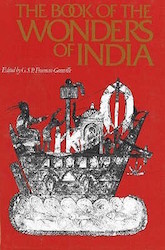 Sailors don’t get the best rep in the literature of the time. Scholars dismissed their tales as fabrications and many of their snobbish passengers complained about everything from their fees to their eating habits (Ibn Battuta, in particular, strikes me as not the most pleasant of traveling companions). But in The Book of the Wonders of India, the sailors finally have their say. Compiled in the tenth-century by a shipmaster living in the wealthy port of Siraf on the Persian Gulf, this extraordinary collection of sailors’ yarns travels the length of the Indian Ocean trading world at the time, from China to East Africa, and features everything from fetching mermaids and cannibals, to pirates and birds capable of carrying off a man (an early precursor to the Sindbad tales).
Sailors don’t get the best rep in the literature of the time. Scholars dismissed their tales as fabrications and many of their snobbish passengers complained about everything from their fees to their eating habits (Ibn Battuta, in particular, strikes me as not the most pleasant of traveling companions). But in The Book of the Wonders of India, the sailors finally have their say. Compiled in the tenth-century by a shipmaster living in the wealthy port of Siraf on the Persian Gulf, this extraordinary collection of sailors’ yarns travels the length of the Indian Ocean trading world at the time, from China to East Africa, and features everything from fetching mermaids and cannibals, to pirates and birds capable of carrying off a man (an early precursor to the Sindbad tales).
Tales of the Marvellous and News of the Strange translated by Malcolm C. Lyons
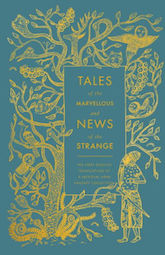 Captain Shahriyar’s tales weren’t the only stories to marvel at the wonders of creation: there’s an entire genre in medieval Arabic literature—aja’ib—which exhorts the reader to do just that. Tales of the Marvellous and News of the Strange is one of my favorites. Similar to the Nights (and indeed, they share some stories) Tales of the Marvelous is older and even wilder and pulpier in many ways, dispensing with the Night’s often vain attempt to be somewhat instructional in favor of wise-cracking centaurs, death-dealing automata, copious treasure, and a sea princess whose son you should definitely not kidnap and transform into a bird.
Captain Shahriyar’s tales weren’t the only stories to marvel at the wonders of creation: there’s an entire genre in medieval Arabic literature—aja’ib—which exhorts the reader to do just that. Tales of the Marvellous and News of the Strange is one of my favorites. Similar to the Nights (and indeed, they share some stories) Tales of the Marvelous is older and even wilder and pulpier in many ways, dispensing with the Night’s often vain attempt to be somewhat instructional in favor of wise-cracking centaurs, death-dealing automata, copious treasure, and a sea princess whose son you should definitely not kidnap and transform into a bird.
The Warrior Women of Islam by Remke Kruk
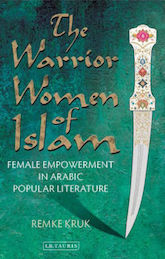 Considering that a number of “marvels” in the stories above revolve around sexual adventure and general criminality, few make for easy family entertainment and thus were often dwarfed in popularity by historical epics of more wholesome heroes like Antarah ibn Shaddad and Princess Dhat al-Himma. Many of these romances revolve around female warriors, women capable of wielding weapons and armies and facing off against dastardly foes. Though a new translation of Dhat al-Himma’s tale is due later this year, Remke Kruk offers a wonderful and accessible survey of a number of these epics in The Warrior Women of Islam.
Considering that a number of “marvels” in the stories above revolve around sexual adventure and general criminality, few make for easy family entertainment and thus were often dwarfed in popularity by historical epics of more wholesome heroes like Antarah ibn Shaddad and Princess Dhat al-Himma. Many of these romances revolve around female warriors, women capable of wielding weapons and armies and facing off against dastardly foes. Though a new translation of Dhat al-Himma’s tale is due later this year, Remke Kruk offers a wonderful and accessible survey of a number of these epics in The Warrior Women of Islam.
Arabian Nights and Days by Naguib Mahfouz
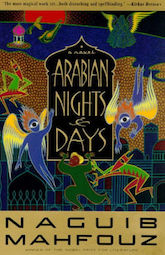 Moving into the modern era, Naguib Mahfouz, the master himself, takes on the aftermath of the Nights in a wickedly sharp, entertaining and poignant short novel. Shahrzad has used her stories to save herself and the women of her city from the blood-letting despot Shahriyar, but the magic of her tales is not quite done with them. Arabian Nights and Days, one of my favorite books, takes the themes and characters of the original story and imbues them with emotional heft, political satire and a reflection on faith that makes this a masterpiece.
Moving into the modern era, Naguib Mahfouz, the master himself, takes on the aftermath of the Nights in a wickedly sharp, entertaining and poignant short novel. Shahrzad has used her stories to save herself and the women of her city from the blood-letting despot Shahriyar, but the magic of her tales is not quite done with them. Arabian Nights and Days, one of my favorite books, takes the themes and characters of the original story and imbues them with emotional heft, political satire and a reflection on faith that makes this a masterpiece.
The Desert of Souls by Howard Andrew Jones
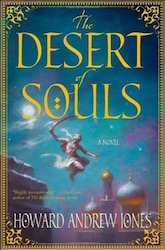 A historical fantasy set in eighth-century Baghdad, The Desert of Souls is a delightful adventure in the spirit of Sherlock Holmes; pairing a military captain and scholar with the very real Caliph Harun al-Rashid and his wazir, Jafar al-Barmaki—the same Abbasid-era figures who made their way into 1001 Nights. As someone rather immersed (alright, obsessed) with the history and folklore of this era, I loved the way Jones brought this world alive and got a kick out of all the “Easter eggs” within—Jafar’s future downfall, in particular!
A historical fantasy set in eighth-century Baghdad, The Desert of Souls is a delightful adventure in the spirit of Sherlock Holmes; pairing a military captain and scholar with the very real Caliph Harun al-Rashid and his wazir, Jafar al-Barmaki—the same Abbasid-era figures who made their way into 1001 Nights. As someone rather immersed (alright, obsessed) with the history and folklore of this era, I loved the way Jones brought this world alive and got a kick out of all the “Easter eggs” within—Jafar’s future downfall, in particular!
 S. A. Chakraborty is a speculative fiction writer from New York City. Her debut, The City of Brass, is available from Harper Voyager and is the first book in The Daevabad Trilogy, an epic fantasy set in the 18th century Middle East. When not buried in books about Mughal portraiture and Omani history, she enjoys hiking, knitting, and recreating unnecessarily complicated, medieval meals for her family. You can find her online most frequently at Twitter (@SChakrabs) where she likes to ramble about history, politics, and Islamic art. A longer list of works, similar to the ones above, is available at her website.
S. A. Chakraborty is a speculative fiction writer from New York City. Her debut, The City of Brass, is available from Harper Voyager and is the first book in The Daevabad Trilogy, an epic fantasy set in the 18th century Middle East. When not buried in books about Mughal portraiture and Omani history, she enjoys hiking, knitting, and recreating unnecessarily complicated, medieval meals for her family. You can find her online most frequently at Twitter (@SChakrabs) where she likes to ramble about history, politics, and Islamic art. A longer list of works, similar to the ones above, is available at her website.










